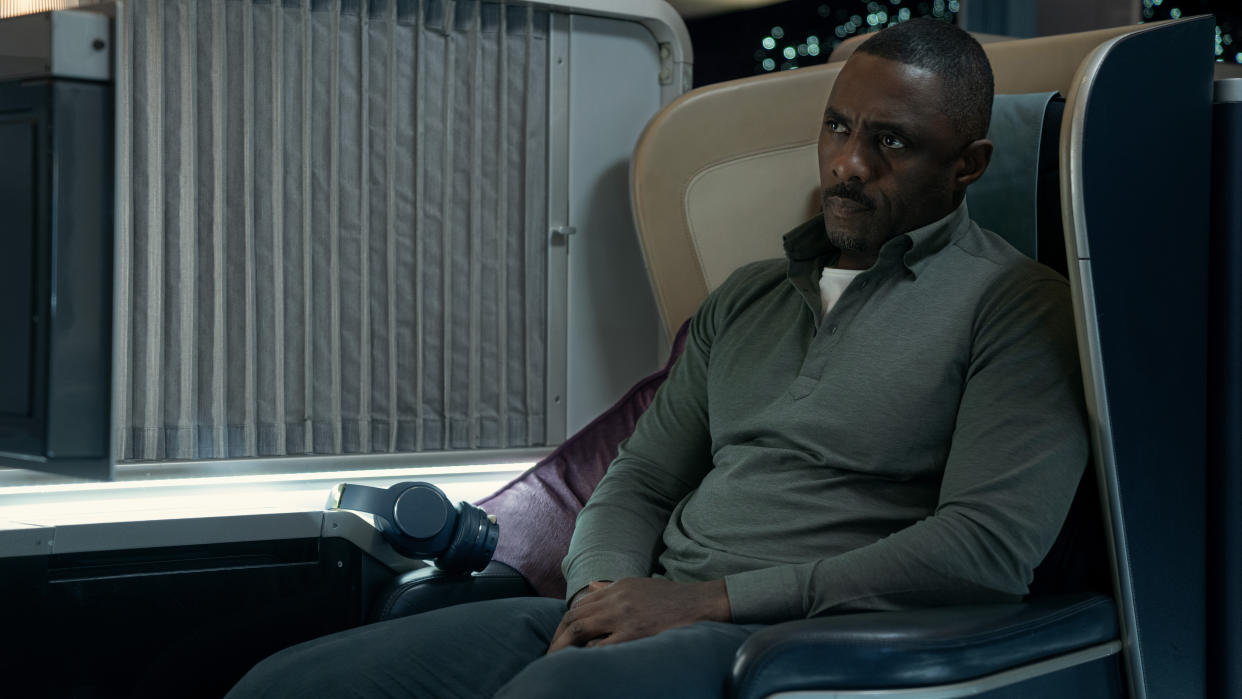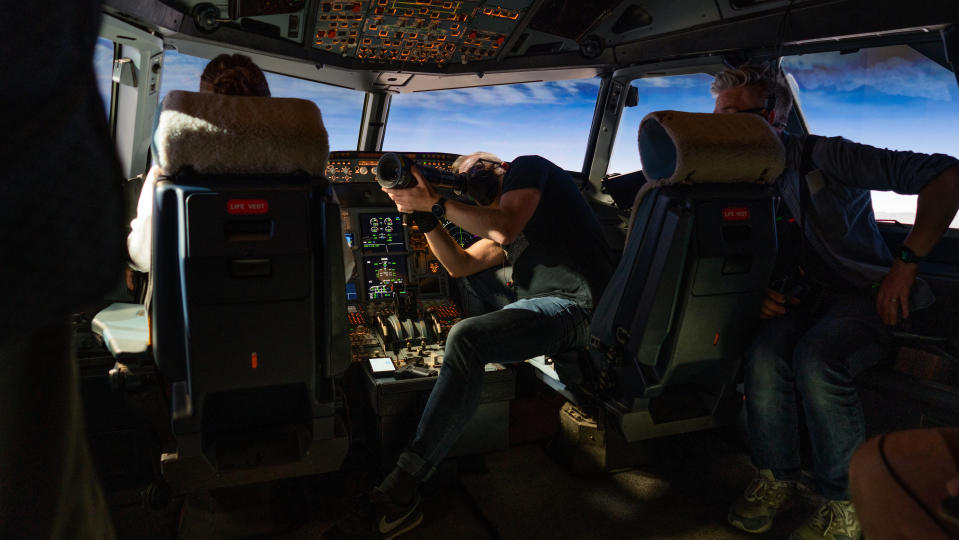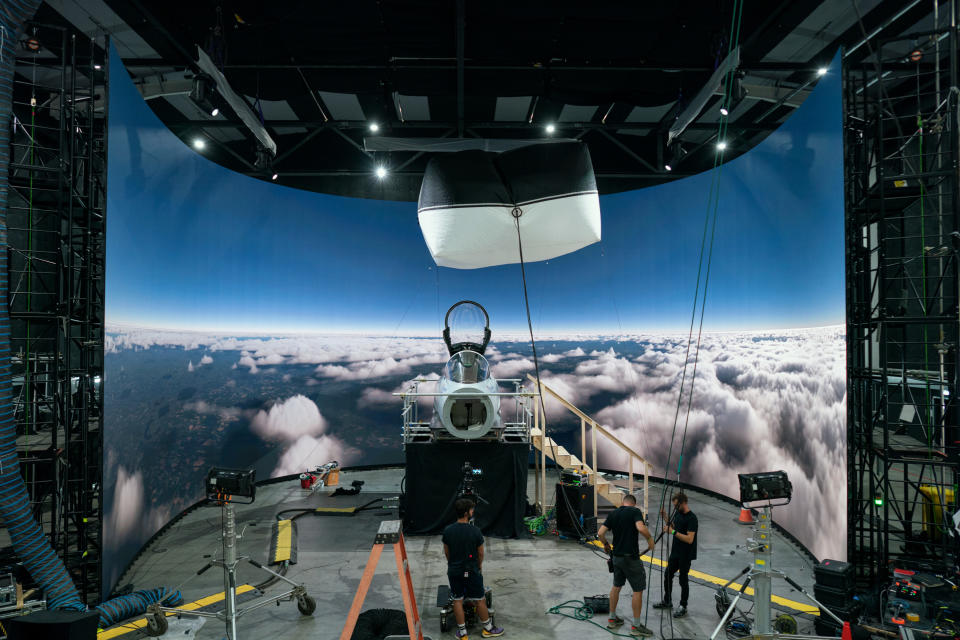The ‘Hijack’ Plane Wasn’t Real — but It May Have Been More Complicated to Build

A seven-hour flight with Idris Elba sounds like the beginnings of a rom-com (or a dream we once had), but Apple TV+’s “Hijack” goes a very different route. Shortly after takeoff, a flight from Dubai to London is taken over by a mysterious group for unexplained reasons. No ransom is demanded, no motive offered. Just a plane full of passengers sitting in terror as things go increasingly awry. But before a plane can be hijacked, it must be built. And creating a 3D set where every inch was camera ready turned out to be a tall order for production designer Andrew Purcell.
“Rarely do you have seven hours of story to tell on a plane,” Purcell told IndieWire. “So as a consequence, you can’t avoid looking at everything, and everything needs to look authentic, and everything needs to look believable. You’re keeping that suspension of disbelief for seven hours.”
More from IndieWire
Filmed over the course of 70 days, “Hijack” is a mesmerizing (and somewhat claustrophobic) recreation of a flight from hell. Here’s how Purcell and his team achieved it.
The plane began with an empty platform, which was eventually filled with over 164 feet of the bespoke plane, from cockpit to tail. And while authenticity was central, the needs of filming necessitated the ability to pull apart sections while 200 people stepped on and off the plane each day, which presented structural issues that a real plane wouldn’t have. Likewise, Purcell and his team had to enlarge the typical size of some action-heavy areas of the plane to accommodate the crew while also maintaining the illusion of a real plane.
That illusion extended all the way to the airline’s branding — from coasters and logo to the decor of first class — and the monitors on the backs of the seats, something done practically rather than with VFX.
“The back of every seat and every seat had to have the option that you would have in flight, in-flight information, the map with the plane’s progression, commercials, films, music, cartoons, all of that,” Purcell said. “And that had to work in continuity. So if you have a hijacker walking from the tail up to the cockpit, passing everybody’s monitors, then all the material on all those seats had to be that much further on. So we couldn’t do that with just 10-second loops. They had to be full shows available, pretty much.”
Likewise, several sequences include the camera situated outside the cockpit near the security door, which frequently cuts to the black-and-white monitor the pilots watch. That, too, was built practically. “You’ve got a [crew member] actually rigging up the camera behind the phone, so when Idris is on the phone to them in the cockpit, that was a live feed, his face on the cockpit screen,” Purcell said. And not only was the plane’s lighting was built in, offering the crew the ability to subtly adjust the brightness and tone throughout what would typically be a fairly mundane daytime flight, but the cockpit’s control panel was rigged to a flight simulator to ensure as much authenticity as possible.

“The director of photography is a bit of a flying geek and had a simulator at home,” Purcell said. “And [the instruments were] hooked up to a simulator so that we could plot the flight from Dubai to London, and we read the appropriate readouts for every moment in the flight. A director could be right on the instrumentation and see the dials for real, without having to do green screen, without having to do anything in post.”
The devil was in the details for Purcell and his team (“Never again,” he said with a laugh about creating content for the video monitors), and that was especially true when it came to the exteriors of a flight. Utilizing the volume, “Hijack” manages to create the illusion of an airborne plane, from the movement of sunlight through the passenger windows to in-camera reflections caused by the “light.”

“Now the new technology in terms of LED screens is the interactive lighting,” Purcell said. “So, as well as getting a believable image, you’re getting an interactive light off all the shiny surfaces, which you wouldn’t with green screen or blue screen. You’d then have to CGI all this on in post, which is hugely expensive. That’s what’s really exciting about the volume.”
Purcell even designed the earthbound offices with massive windows and polished floors to take further advantage of that ersatz reflective glare, which is exactly the type of tiny accent that tricks our brains into believing in the reality being presented — even as the passengers on the “Hijack” plane are left in the dark as to the ultimate fate of their flight.
The first two episodes of “Hijack” are now streaming on Apple TV+, with new episodes premiering every Wednesday.
Best of IndieWire
Where to Watch This Week's New Movies, from 'Indiana Jones and the Dial of Destiny' to 'Nimona'
The 25 Best Nude Scenes in Film, from 'Shortbus' to 'Blue Velvet' to 'No Hard Feelings'
Sign up for Indiewire's Newsletter. For the latest news, follow us on Facebook, Twitter, and Instagram.

